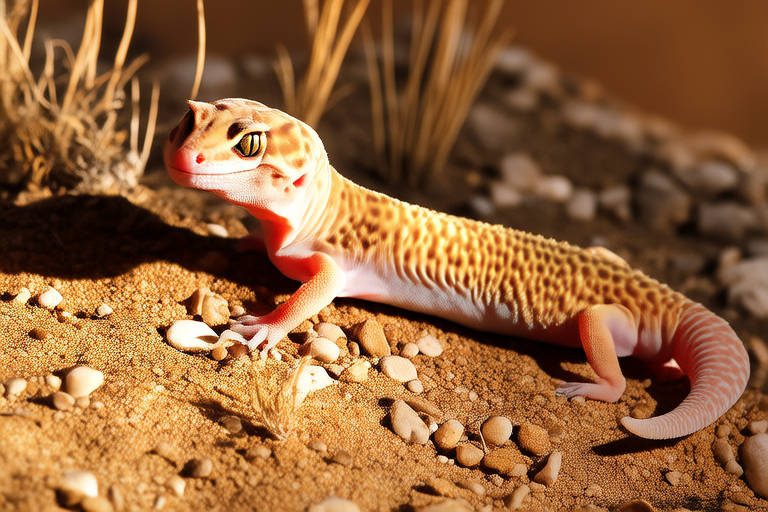Leopard Gecko Care: A Beginner’s Guide to Keeping Them Happy and Healthy
Welcome to the world of leopard geckos! These charming reptiles are popular pets due to their docile nature and relatively low maintenance requirements. This guide will provide you with all the information you need to ensure your leopard gecko lives a long, happy, and healthy life. From setting up their habitat to understanding their dietary needs, we’ll cover everything you need to know as a new owner.
Habitat Setup
Enclosure Size
The first step in setting up your leopard gecko’s home is choosing an appropriate enclosure. Leopard geckos are terrestrial, meaning they spend most of their time on the ground. A 10-gallon tank is suitable for one adult leopard gecko, but if you plan to house multiple geckos or want more space for decorations, consider a larger tank. For two geckos, a 20-gallon tank is recommended.
Substrate
Choosing the right substrate is crucial for your gecko’s health. Avoid substrates like sand, which can cause impaction if ingested. Instead, opt for reptile carpet, paper towels, or a safe substrate like coconut fiber bedding. These options are easy to clean and pose no risk of ingestion.
Temperature and Humidity Requirements
Leopard geckos require a temperature gradient within their enclosure to regulate their body temperature. The warm end should be around 90°F (32°C) while the cool end should be around 75°F (24°C). Use a heat lamp or under-tank heater to achieve these temperatures. Ensure the temperature does not drop below 70°F (21°C) at night. Humidity should be kept low, between 30% and 40%. Excessive moisture can lead to respiratory infections.
Diet
Types of Food
Leopard geckos are insectivores, meaning their diet consists mainly of insects. Crickets are a staple food, but you can also feed them dubia roaches, waxworms, and mealworms. It’s important to gut-load the insects before feeding them to your gecko. Gut-loading involves feeding the insects a nutritious diet rich in vitamins and minerals, which they then pass on to your gecko.
Feeding Frequency
Feed your leopard gecko every other day, offering as many crickets or other insects as they can eat in 10-15 minutes. Younger geckos may need to be fed daily, while adults can go longer between meals. Always remove uneaten insects after feeding to prevent them from biting or stinging your gecko.
Handling Tips
Leopard geckos are generally calm and easy to handle, but it’s important to approach them gently and respectfully. Start by letting them get used to your presence. Spend time near their enclosure without handling them so they become accustomed to your scent and movements.
When ready to handle your gecko, gently scoop them up from underneath, supporting their body. Avoid grabbing them by the tail, as leopard geckos can drop their tails when stressed. While this is not harmful, it can take several weeks for the tail to regenerate, and the new one may look different.
Common Health Issues
Mouth Rot
Mouth rot, also known as infectious stomatitis, is a bacterial infection that causes swelling and redness around the mouth. It often results from poor hygiene or trauma. Symptoms include excess salivation, difficulty eating, and pus discharge. If you suspect your gecko has mouth rot, consult a veterinarian immediately.
Metabolic Bone Disease (MBD)
MBD is a serious condition caused by a lack of calcium or vitamin D3. Symptoms include softening of the bones, tremors, and difficulty moving. To prevent MBD, ensure your gecko’s diet includes calcium and vitamin D3 supplements. Also, provide UVB lighting to help them synthesize vitamin D3.
Signs of a Healthy Leopard Gecko
Appearance
A healthy leopard gecko will have clear eyes, bright coloring, and smooth skin. Their tail should be plump and full, indicating good health and proper nutrition. Avoid any signs of swelling, discoloration, or patches of missing scales.
Behavior
Your gecko should be active during the evening and night, when they are naturally most active. They should be alert and responsive to stimuli. If your gecko is lethargic or unresponsive, it could indicate an underlying health issue.
Weight
Weigh your gecko regularly to monitor their weight. Sudden weight loss or gain can be a sign of illness. A healthy gecko will maintain a consistent weight over time.
Conclusion
By following the guidelines provided in this article, you can ensure your leopard gecko enjoys a long and healthy life. Remember to provide a suitable habitat, offer a balanced diet, and handle your gecko gently. Regular vet check-ups and attention to any changes in behavior or appearance will help you catch and address any health issues early. With proper care, your leopard gecko will thrive and bring joy to your home for years to come.
